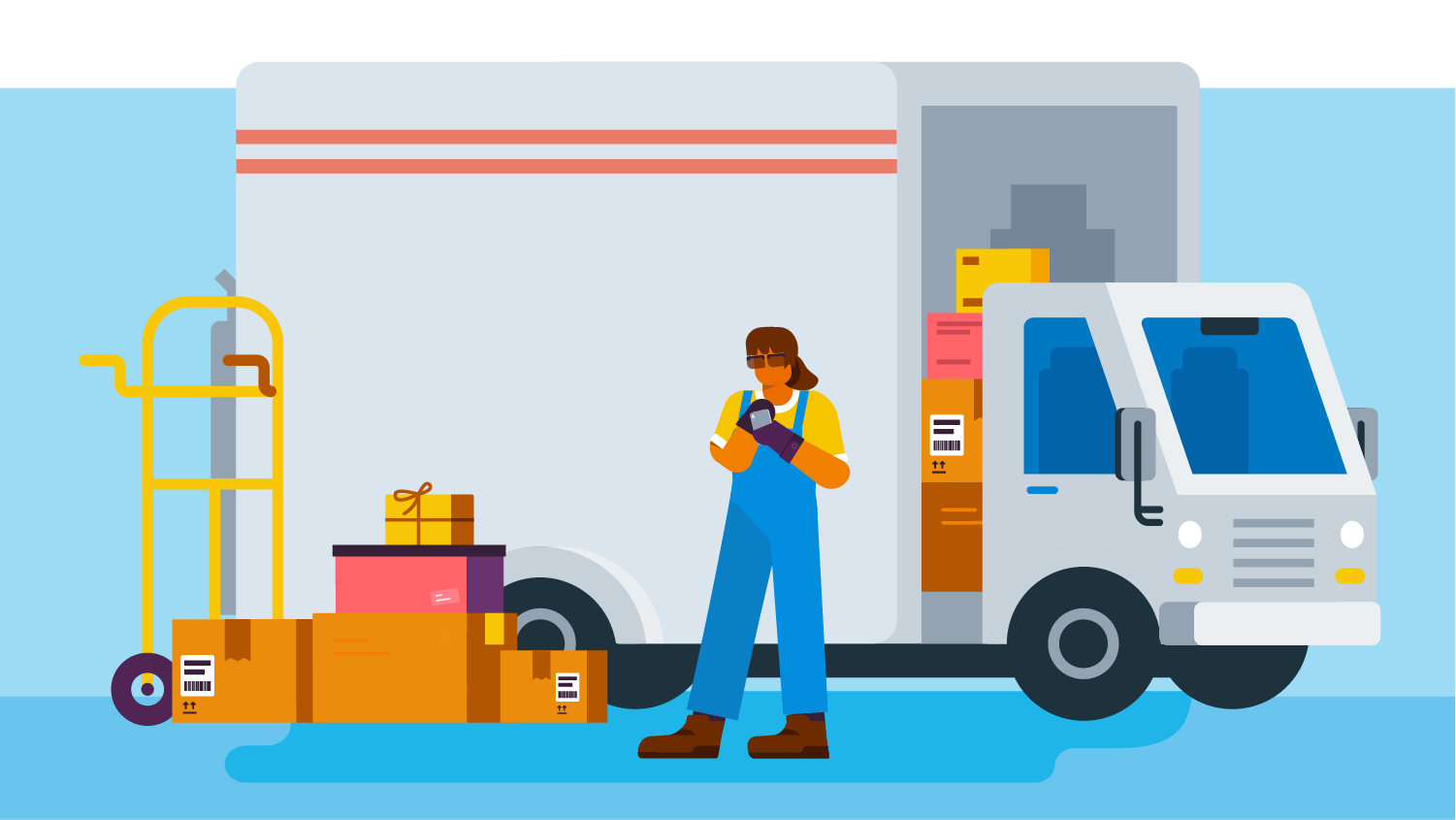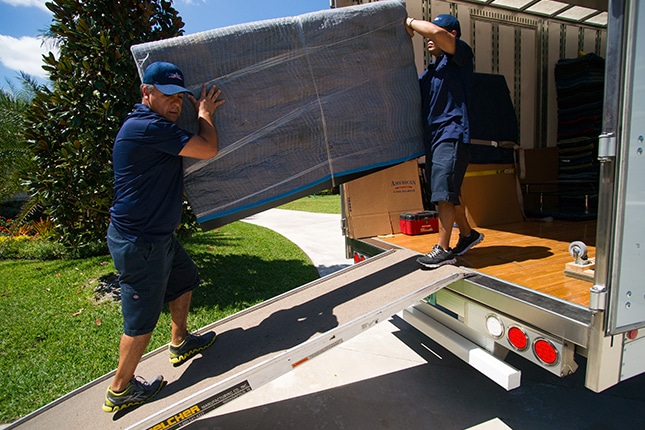Family Owned Movers: The Benefits of Using Full Service Movers
Moving Truck And Movers: Specialist Relocation Professionals Can Assist Make Your Shift Smooth And Worry-free
History and Advancement of Moving Providers
The Dawn of Moving: From Muscle to Devices
Photo this: a handful of strong males carrying heavy trunks on wooden carts, browsing cobblestone streets with sweat and decision. Before the modern moving market took shape, moving was a harsh, labor-intensive task. In ancient times, moving typically indicated counting on sheer physical strength and simple tools. The lack of specialized services meant families and merchants needed to coordinate every detail themselves, frequently risking damage or loss.
But isn't it fascinating how requirement fuels development? As cities broadened and commerce thrived, the requirement for efficient, dependable moving services became glaringly apparent. Get in the era of horse-drawn wagons and later, motorized cars, which transformed how belongings took a trip from one location to another.
Industrial Revolution: The Catalyst for Modification
The 19th century's commercial boom reshaped many elements of life, consisting of how individuals moved. Suddenly, metropolitan migration rose, and with it, the demand for professional movers skyrocketed. No longer was moving a basic chore; it developed into a customized service offering:
- Packing competence to secure fragile products
- Organized filling strategies maximizing area
- Transportation options customized to various ranges
This period marked the birth of companies dedicated solely to moving, preparing for today's complex logistics and customer-centric techniques.
Technological Improvements and Their Impact
Can you imagine moving without contemporary equipment? The introduction of hydraulic lifts, forklifts, and pallet jacks transformed the market over night. Suddenly, movers could handle bulky furnishings and heavy appliances with ease, lowering injuries and enhancing effectiveness.
The combination of digital innovation triggered a brand-new wave of innovation. GPS tracking, online reservation platforms, and real-time inventory management have actually ended up being staples in the moving services landscape. These tools not just enhance openness however likewise empower clients to stay linked and informed throughout their moving journey.
Secret Turning Points in Moving Provider Evolution
| Period | Development | Significance |
|---|---|---|
| Ancient Times | Manual work and standard carts | Structure of moving as a necessity |
| 19th Century | Horse-drawn wagons and packaging services | Birth of professional moving business |
| 20th Century | Motorized trucks and mechanized devices | Increased performance and scale |
| 21st Century | Digital combination and GPS innovation | Improved consumer experience and logistics |
Reflections on the Journey
Reviewing the evolution of movers, one might question: how did a simple act of transporting belongings end up website being a sophisticated industry? It's a tale of durability, adaptation, and continuous improvement. From the sweat-soaked streets of old to the precision-driven operations these days, the history of moving services is as vibrant as the people who count on them.
Next time you load a box or employ a mover, consider the layers of history ingrained in every step. The journey of movers encapsulates human resourcefulness, changing what was when a complicated task into a seamless experience.
Checking out the Spectrum of Moving Services
When the time pertains to shift your life from one address to another, the variety of moving services offered can seem like navigating a labyrinth. Do you need a basic loading and dumping team, or does your move need the skill of complete packing and unpacking? Comprehending the nuances can save hours of frustration and unexpected costs.
Typical Kinds Of Moving Solutions
- Local Relocations: Designed for relocations within a city or city, these services typically run on a hourly basis, ideal for short distances.
- Long-Distance Moves: Covering moves beyond 100 miles, these require more coordination, from logistical preparation to protect transportation, typically priced by weight and distance.
- Full-Service Moves: Movers manage whatever-- packing, filling, carrying, discharging, and sometimes even unpacking. Ideal for those pushed for time or energy.
- Self-Service Relocations: You load and fill your valuables, while the business deals with transportation and discharging. A happy medium offering cost savings and some benefit.
- Specialized Moves: For fragile, bulky, or important items like pianos, antiques, or artwork, requiring specific equipment and proficiency.
Specialist Tips to Navigate Your Moving Service Choices
- Prioritize Versatility: Select a service that adjusts to unanticipated hold-ups or last-minute changes-- rigid schedules can turn a smooth move into a logistical nightmare.
- Inspect Insurance Options: Not all moving business supply the very same level of defense. Understanding your coverage can avoid heartache if something goes awry.
- Request Detailed Inventories: A precise product list avoids disputes and ensures responsibility, specifically when dealing with long-distance or specialized moves.
- Consider Time of Year: Seasonal need can impact accessibility and pricing. Early booking during off-peak seasons might give better service and versatility.
- Ask About Packing Materials: Premium boxes, bubble wrap, and cushioning can be the difference between a scratched treasure and a beautiful arrival.
Table: Service Characteristic Compared
| Service Type | Who Packs? | Transport Mode | Normal Prices Model | Ideal For |
|---|---|---|---|---|
| Regional Move | Customer or Movers | Truck | Per hour | Brief distances, small loads |
| Long-Distance Move | Movers | Truck or Container | Weight & & Distance | Cross-state or regional moving |
| Full-Service Move | Movers | Truck | Flat or Weight-Based | Time-sensitive, high-stress moves |
| Self-Service Move | Client | Truck or Container | Flat or Per hour | Cost-conscious, hands-on movers |
| Specialized Move | Movers with know-how | Specialized Equipment | Customized Quote | Delicate or valuable items |
The Unseen Complexity Behind Each Choice
Have you ever questioned why moving seems uncomplicated on tv however develops into a waterfall of last-minute decisions in real life? The reality depends on the complexities of each service type. Full-service relocations might appear like a high-end, but the knowledge included in packing delicate heirlooms or taking apart large furnishings is a craft refined over years. Choosing for a self-service move might conserve cash, but it demands a keen understanding of how to pack efficiently-- did you know that stacking strangely shaped boxes improperly can cause internal moving during transit, wrecking vulnerable contents?
Choosing the best kind of moving service is not practically convenience-- it has to do with safeguarding your memories and financial investments. What's your relocation's story going to be?

Packing and Moving Strategies
Ever attempted to fit a luggage that just will not close? That's the type of puzzle expert movers resolve daily-- but on a much bigger scale. The secret lies not in brute force however in tactical positioning and smart usage of space. Packaging isn't simply about packing items into boxes; it's an art kind where every inch counts.
Layering for Success
Envision a painter layering colors to create depth. Likewise, when packing, start with much heavier products at the bottom, then cushion with softer products like bubble wrap or towels. This avoids damage and makes the most of box stability. Oddly formed products can slip into spaces, lowering wasted area.
- Wrap vulnerable products individually with tissue or foam to prevent scratches.
- Use clothing as padding-- it's both effective and environmentally friendly.
- Fill voids with packaging peanuts or crumpled paper to decrease motion.
Identifying: The Unsung Hero

What good is best packing if you spend hours searching through boxes? In-depth labeling is a game-changer. Rather of vague tags like "Kitchen area," try this method:
| Label | Description | Priority |
|---|---|---|
| Delicate - Glassware | Manage with care, includes delicate products | High |
| Essentials - Opening Night | Items needed instantly after moving | Immediate |
| Books - Research Study Room | Stacked, heavy books | Medium |
Strategic Packing Tips
- Dismantle big furnishings and keep screws in identified bags taped to the pieces.
- Use uniform box sizes when possible-- stacking ends up being simpler and safer.
- Don't overpack boxes; weight limitations exist for a factor. Go for 40-50 pounds max.
- Wrap furniture edges with moving blankets to prevent scratches throughout transit.
- Seal boxes with high-quality packing tape-- double layers on the bottom are essential.
Why do some movers swear by a color-coded system? Since it eliminates uncertainty on moving day. Assign each space a color and mark boxes appropriately. This small step can conserve hours when unloading and unpacking.
Packing and moving demand precision-- like a chess game where every move counts. Have you ever noticed how some movers manage bulky products easily? They leverage angles and pivot indicate browse tight corners without damage. It's not muscle; it's technique.
Unseen Battles Behind the Moving Van Doors
Ever viewed a team of expert movers carry a grand piano through a narrow doorway and questioned how they pull it off without a scratch? The art of moving isn't just muscle and trucks; it's a fragile dance with unpredictability. Weather can flip from a sunlit blessing to a torrential hazard in minutes, turning a simple drive into a logistical labyrinth.
One notorious obstacle is the labyrinthine design of some homes or houses. Staircases too tight for dollies, entrances narrower than standard boxes, or elevators that barely fit a couch-- these physical peculiarities demand innovative services on the spot. Movers frequently resort to unconventional methods like dismantling furniture or utilizing customized cushioning to secure both the item and the home.
Precision Packing: More Than Simply Wrapping
It's tempting to believe packaging is simply stuffing boxes, but the truth is an intricate puzzle of weight distribution and fragility. Movers need to expect how items will move throughout transit-- a miscalculation can indicate shattered treasures or dinged up appliances. The trump card? Strategic layering and utilizing materials with particular shock-absorbing qualities.
- Bubble wrap is basic, however alternating it with foam sheets can considerably lower impact damage.
- Heavy items go at the bottom; vulnerable ones nestle on top, cushioned by soft fabrics.
- Labeling boxes not just by contents but by handling guidelines ensures quicker, safer discharging.
Another less spoke about stress is the mental toll. The clock ticks relentlessly, and every hold-up ripples through tight schedules. Remaining calm amid disorderly last-minute modifications needs mental agility and team synergy.
Traffic Congestion and Timing: The Invisible Challengers
| Obstacle | Expert Method | Impact |
|---|---|---|
| Urban congestion | Path optimization apps and versatile scheduling | Minimizes hold-ups and fuel usage |
| Parking constraints | Pre-arranged permits or strategic parking nearby | Avoids fines and time loss |
| Unpredictable weather condition | Waterproof coverings and contingency strategies | Maintains the condition of products and devices |
Do you really understand what it requires to keep a moving day on track? It's not practically strength or endurance; it has to do with insight, versatility, and a deep understanding of every piece of the puzzle. The next time you see movers at work, keep in mind: behind that seamless operation lies a series of determined maneuvers and quick thinking that few ever notification.